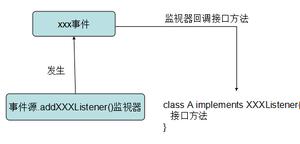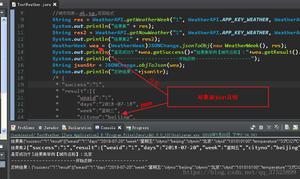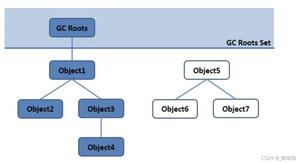如果compareTo()返回0,为什么暗示对象相等?
让我们上一堂课Person。人有名字和身高。
Equals和hashCode()仅考虑名称。人是可比的(或者我们为它实现比较器,没有关系)。将人按身高进行比较。
预期两个不同的人可以具有相同的身高的情况似乎是合理的,但是例如。TreeSet的行为就像comapareTo()== 0意味着相等,而不仅仅是相同的大小。
为避免这种情况,如果大小相同,比较可以次之于别的东西,但是它不能用于检测相同大小的不同对象。
例:
import java.util.Comparator;import java.util.HashSet;
import java.util.Objects;
import java.util.Set;
import java.util.TreeSet;
public class Person implements Comparable<Person> {
private final String name;
private int height;
public Person(String name,
int height) {
this.name = name;
this.height = height;
}
public int getHeight() {
return height;
}
public void setHeight(int height) {
this.height = height;
}
public String getName() {
return name;
}
@Override
public int compareTo(Person o) {
return Integer.compare(height, o.height);
}
public boolean equals(Object obj) {
if (obj == null) {
return false;
}
if (getClass() != obj.getClass()) {
return false;
}
final Person other = (Person) obj;
if (!Objects.equals(this.name, other.name)) {
return false;
}
return true;
}
public int hashCode() {
int hash = 5;
hash = 13 * hash + Objects.hashCode(this.name);
return hash;
}
public String toString() {
return "Person{" + name + ", height = " + height + '}';
}
public static class PComparator1 implements Comparator<Person> {
@Override
public int compare(Person o1,
Person o2) {
return o1.compareTo(o2);
}
}
public static class PComparator2 implements Comparator<Person> {
@Override
public int compare(Person o1,
Person o2) {
int r = Integer.compare(o1.height, o2.height);
return r == 0 ? o1.name.compareTo(o2.name) : r;
}
}
public static void test(Set<Person> ps) {
ps.add(new Person("Ann", 150));
ps.add(new Person("Jane", 150));
ps.add(new Person("John", 180));
System.out.println(ps.getClass().getName());
for (Person p : ps) {
System.out.println(" " + p);
}
}
public static void main(String[] args) {
test(new HashSet<Person>());
test(new TreeSet<Person>());
test(new TreeSet<>(new PComparator1()));
test(new TreeSet<>(new PComparator2()));
}
}
结果:
java.util.HashSet Person{Ann, height = 150}
Person{John, height = 180}
Person{Jane, height = 150}
java.util.TreeSet
Person{Ann, height = 150}
Person{John, height = 180}
java.util.TreeSet
Person{Ann, height = 150}
Person{John, height = 180}
java.util.TreeSet
Person{Ann, height = 150}
Person{Jane, height = 150}
Person{John, height = 180}
你知道为什么会这样吗?
回答:
从java.util.SortedSetjavadoc中提取:
请注意,如果排序集要正确实现Set接口,则排序集(无论是否提供显式比较器)所维护的顺序必须与equals一致。(有关与equals一致的精确定义,请参见Comparable接口或Comparator接口。)之所以这样,是因为Set接口是根据equals操作定义的,但是排序后的set使用其compareTo(或compare)方法执行所有元素比较。
,因此从排序集的角度来看,此方法认为相等的两个元素相等。即使排序顺序与equals不一致,也可以很好地定义排序集的行为。它只是不遵守Set接口的一般约定。
因此,换言之,SortedSet破坏(或“扩展”)了Object.equals()和的一般合同Comparable.compareTo。参见合同compareTo:
强烈建议(但并非严格要求(x.compareTo(y)==
0)==(x.equals(y))。一般而言,任何实现Comparable接口且违反此条件的类都应明确指出这一事实。推荐的语言是“注意:此类具有与等式不一致的自然顺序”。
以上是 如果compareTo()返回0,为什么暗示对象相等? 的全部内容, 来源链接: utcz.com/qa/433387.html









